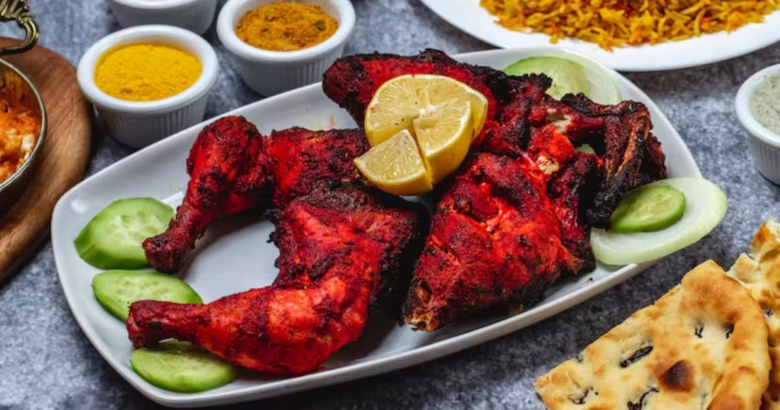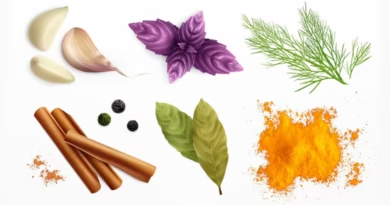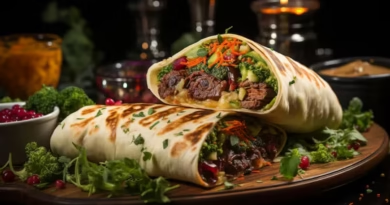Royal Tandoor: A Culinary Journey Through Traditional Flavors
Discover the Rich Flavors and History of Royal Tandoor

Table of Contents
ToggleArticle Summary
The rich flavors of Indian and South Asian food are brought to life by the cherished culinary tradition known as Royal Tandoor. The core of Royal Tandoor, its background, its cooking techniques, and the variety of foods prepared using this renowned cooking method are all covered in this article. This tutorial offers a thorough look at why Royal Tandoor continues to win hearts throughout the world, regardless of your level of experience with tandoori cooking. We will explain everything you need to know about this remarkable experience, from the succulent meats to the smoky scents that permeate the air.
What is Royal Tandoor?
An essential component of Indian cooking, the Royal Tandoor combines robust flavors with traditional cooking methods. It describes the cooking technique as well as the kinds of food made in a tandoor, a clay oven that is typically used for roasting, baking, and grilling. High temperatures are used to cook meats, vegetables, and breads in the Royal Tandoor style, giving them a distinct smoky flavor that no other cooking technique can equal.
Since ancient India and Persia, the tandoor has been in use for thousands of years. It has become a representation of opulent, delectable food over time. A favorite among foodies, the Royal Tandoor is renowned for its elaborate and fragrant meals that are frequently served in a royal setting or during festivities.
The History of Tandoor Cooking
The ancient civilizations of Persia and the Indian subcontinent are where the art of Tandoor cooking first emerged. According to archeological findings, tandoor ovens have been around for more than 5,000 years. Meats were slow-cooked over charcoal in the earliest tandoors, which were constructed of clay.
Tandoor cooking became an art form in India’s royal courts. Tandoor-cooked food was prized by kings and nobles for its delicate textures and deep flavors. With the addition of different spices and marinades that improved the meals’ flavor profile, the cooking technique was refined over generations.
How Does the Royal Tandoor Work?
Operating temperatures at the Royal Tandoor can frequently exceed 800°F (427°C). Food can cook rapidly because to this high heat, which keeps the inside moist and soft while scorching the outside. Because the tandoor is composed of clay, heat is absorbed and dispersed uniformly for reliable cooking.
Tandoors are typically burned with wood or charcoal, which gives the food a distinct smokey flavor. Typically, the food is cooked vertically in the tandoor while skewered. The tandoor’s clay walls hold heat, forming a sealed space that guarantees food cooks rapidly and keeps its moisture.
Popular Dishes Prepared in the Royal Tandoor
Many delectable dishes that are now mainstays of Indian cuisine may be found at the Royal Tandoor. These are a few of the more well-known ones:
1. Tandoori Chicken
Before being cooked in the tandoor, tandoori chicken—possibly the most famous tandoori dish—is marinated in a concoction of yogurt, herbs, and spices. The chicken is perfectly crispy on the outside and stays moist on the inside because to the intense heat.
2. Naan Bread
Tandoor cooking gives the traditional flatbread, naan, a soft, chewy texture and a slightly crispy outside. It comes in several varieties, such butter naan or garlic naan, and is frequently eaten with kebabs and curries.
3. Seekh Kebabs
Minced beef is combined with herbs and spices to make Seekh kebabs. Usually served with yogurt-based dips, these kebabs are shaped onto skewers and cooked in the tandoor, giving them a juicy and savory bite.
4. Tandoori Paneer
A tasty vegetarian substitute for meat-based meals is paneer, or Indian cottage cheese, which is marinated in spices and grilled in the tandoor. This recipe is a favorite among vegetarians because of the spices and smoky flavor.
5. Tandoori Fish
Fish, usually white fish like bass or tilapia, is marinated in a yogurt-and-spice combination before being grilled in a tandoor. The end product is a fish that is delicious, delicate, and faintly smokey.
6. Tandoori Roti
Cooked directly on the tandoor walls, tandoori roti is thinner and crispier than naan. It absorbs all the rich flavors of lentils and curries, making it the ideal side dish.
Why is Royal Tandoor So Special?
Royal Tandoor cooking is special for several reasons:
-
Flavor: A depth of flavor that is difficult to achieve with other techniques is produced by the combination of high heat, smokiness, and the special spices utilized in Royal Tandoor cooking. From the fluffy, pillowy naan to the charred edges of the chicken, every dish has a unique flavor.
-
Healthier Cooking: Tandoor’s high heat makes it possible to cook without using a lot of oil or fat. Vegetables and meats maintain their natural fluids, which keeps them tasty and soft.
-
Cultural Heritage: The Royal Tandoor is a symbol of generations’ worth of culinary customs that date back hundreds of years. It is a representation of royal kitchens and traditional culinary methods that are still widely used in contemporary kitchens.
The Benefits of Cooking with a Royal Tandoor
Using a tandoor in cooking offers several benefits, including:
-
Authentic Taste: Tandoor cooking adds a unique smokey flavor impossible to achieve with contemporary kitchenware. Food tastes more authentic because of this flavor profile, especially in traditional Indian cuisine.
-
Quick Cooking: Tandoors are ideal for busy homes or restaurants because of their high temperature, which cooks food in a fraction of the time when compared to other methods.
-
Moisture Retention: The meal keeps its natural moisture content because it is cooked at a high temperature. This keeps meats moist and tender, which is especially advantageous.
-
Versatility: From breads and vegetables to meats and shellfish, a variety of meals can be prepared in the tandoor. It gives you a lot of freedom to make different kinds of food.
How to Set Up a Royal Tandoor at Home
Because the traditional tandoor is usually huge and used in commercial kitchens, setting up a Royal Tandoor at home requires careful thought. Nonetheless, there are portable, smaller tandoor ovens that may be used at home. To set one up, follow these steps:
-
Choose the Right Tandoor: Choose a tandoor constructed of stainless steel or premium clay. It ought to be strong and resistant to extreme heat.
-
Place It in a Suitable Location: Tandoors may get very hot, so make sure you put them somewhere with good ventilation and away from anything that could catch fire.
-
Prepare Your Ingredients: Use the proper tandoori spices to marinate your meats, vegetables, or breads before serving. Make sure your skewers fit your tandoor properly.
-
Light the Fire: Light the tandoor with wood or charcoal. Before putting the meal inside, let it warm up for at least half an hour.
-
Cooking: After marinating, skewer the marinated food and cook it in the tandoor. It can take anything from 10 to 25 minutes, depending on the meal.
Conclusion
An iconic representation of South Asian and Indian culinary traditions is the Royal Tandoor. Many chefs and family cooks alike favor it because of its distinctive cooking process, deep flavors, and capacity to cook food rapidly while maintaining moisture. The Royal Tandoor provides an unparalleled experience whether you are enjoying tandoori chicken, naan, or a vegetarian treat like tandoori paneer. A tandoor is an essential kitchen accessory if you want to improve your cooking abilities or make regal cuisine at home.
Frequently Asked Questions (FAQs)
What is a Royal Tandoor?
Traditional clay ovens like a Royal Tandoor are used to cook a range of foods, including kebabs, naan, and tandoori chicken. It gives food a smokey flavor that adds character and taste.
How does a tandoor cook food?
Food gets seared and its moisture is retained when it is cooked at extremely high temperatures in a tandoor. The food is put on skewers and swiftly roasted in the tandoor’s confined environment.
Can I use a Royal Tandoor at home?
Yes, you can use portable tandoor ovens at home. In your kitchen or backyard, you can quickly erect a tiny tandoor and begin preparing traditional tandoori cuisine.
What types of food can be cooked in a tandoor?
Vegetables, breads (naan, roti), and meats (chicken, fish, and lamb) can all be prepared in a tandoor. There are so many uses for the tandoor.
Why does tandoor food taste so special?
It is challenging to duplicate the distinct flavor created by the tandoor’s high heat and smoky flavor using other cooking techniques. The meal is juicy and soft because it keeps its moisture content.
Is tandoor cooking healthy?
Yes, tandoor cooking is seen as a healthier alternative because it uses less oil and the intense heat preserves the food’s natural flavors and liquids.
Citation and Disclaimer
Citation
This article’s content comes from a number of reliable culinary sources, including historical accounts, contemporary tandoor installations, and cooking methods. For detailed guidance on tandoor cooking, please speak with a professional chef or culinary specialist, even though the article reflects current understanding.
Disclaimer
This article’s contents are just meant to be informative. Every dish and cooking technique offered is derived from customs and personal experience. It is recommended that readers use a tandoor while adhering to the necessary safety precautions.





